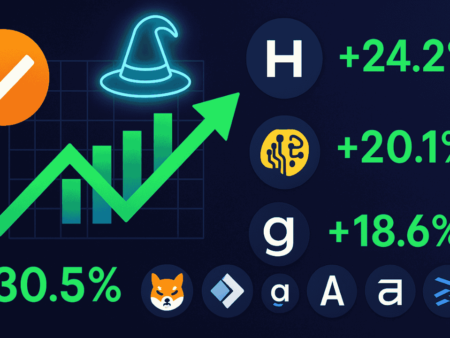The elevator ride to Re7 Capital’s City office feels exactly as you’d expect: sleek and anticipatory, lacquered in the kind of frictionless silence that money people prize. Just beyond the glass, London’s sky is stubborn and overcast. Traders in the bullpen, still caffeinated by a summer of volatility, watch the screens like hawks. Everyone is on edge; every asset’s path is uncertain. Yet, for the partners at Re7, another kind of excitement stirs—one less about daily ticks and more about the arc of things to come.
This week, Re7 Capital—the British firm with a knack for navigating digital asset cycles—confirmed rumors that had been bubbling in Telegram groups for weeks. The fund is going bigger: seeking $100 million for a fresh multi-strategy digital asset vehicle targeting institutions hungry for something less brittle than a vanilla long/short. Veteran founder Ben Roth and his team are pitching something hard to fake in crypto—durability, not just outperformance in wild bull runs.
Why Now? Chasing Edge in a Shifting Market
If you ask the suits, they’ll admit it: raising in crypto isn’t what it was in the gonzo days of ‘21. But Re7’s bet isn’t on froth. Their thesis is woven through anecdotes and PowerPoint slides: even as prices churn and verticals lurch through hype and despair, digital markets are maturing—slowly, in fits and false starts. TradFi capital still wants in, but only with managers who can orchestrate exposure, tame tail risks, and pivot between themes when cycles flip at 3 a.m.
The pitch is simple, but steeped in realism: alpha now isn’t about frantic degens; it’s about strategy drift, data-driven allocation, and knowing when to step aside. Macro overlay, yield curve contortions, DeFi arbitrage, token structure trades—each component in the strategy mix pulls from lessons hard-earned on the back end of busted manias.
Multi-Strategy: The Hedge Fund’s New Weapon
Gone are the days of vanilla directional bets or tweet-fueled moon chases. Re7’s fund is a textbook hedge: one pocket for liquidity harvesting in DeFi, another probing the cracks in yield markets, a third shadowing stressed credit. “Directional exposure,” as one PM puts it, “isn’t banned—but it’s deliberate.” The toolkit feels closer to old-school macro than crypto cosplay: overlays, options, cross-market hedges, plenty of patience.
Risk management gets more than lip service. In the briefing packet, counterparty maps don’t just name major exchanges—they sketch out fallback plans for outages, redemptions, and data feeds. The stress-testing framework is an artifact unto itself: scenario generators primed from the gut-punches of Three Arrows and FTX. For allocators burned in past cycles, this is the secret handshake: evidence you’re not learning on their dime.
The New Breeds of Allocators
The fundraising targets institutions, not Telegram whales—a fact hammered home by the language of the fund docs. Insurance groups, family offices, funds of funds: all looking for diversified, idiosyncratic returns that don’t incinerate at the first whiff of a liquidity freeze. There’s a subtle confidence in the approach; Re7’s executives talk as much about reporting and onboarding as about token selection or “conviction.” The compliance corner boasts as many resources as the research desk, and there’s acknowledgment that, if the space is ever going mainstream, pipes for due diligence and risk must be as sturdy as the alpha engines themselves.
What Success Looks Like (and What Could Trip Them Up)
For Re7, the stakes are plain: join the small cohort of serious, institutional-grade crypto funds, or risk being lumped with the “flyer” set when the next wind changes. If they nail the raise—and, more crucially, the performance—the firm becomes a reference point, a name institutional money cites when arguing that digital asset exposure isn’t just risk-on roulette but a permanent fixture beside PE, credit, or real estate.
Of course, pitfalls are everywhere: regulatory mines, platform blowups, liquidity crunches, or the ever-present threat of new scandals souring sentiment. It’s hard to design a strategy for chaos that feels anything but provisional. But Re7’s history—one of adapting, of not being the loudest in the bull market nor the most embittered in the bear—offers a kind of lived-in credibility that spreadsheets can’t convey.
The Signal in the Noise
As the team heads into the next round of LP calls, the office feels charged—a blend of hope and fatigue, nerves cooling over takeout wrappers and charts splayed across dual monitors. There’s no giddy bravado, no promises of overnight riches or secret Telegram alpha. Just a sense that, if you want to surf the next wave in digital assets, you’d better build your boat for more than one storm.
For Re7 Capital and the investors watching them, this is what adaptation looks like in a market that never truly sleeps: cautious optimism, steady risk management, and—if the pitch is right—returns that make sense even when the headlines don’t.











